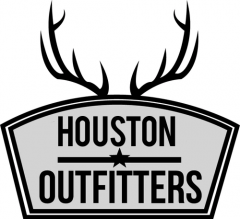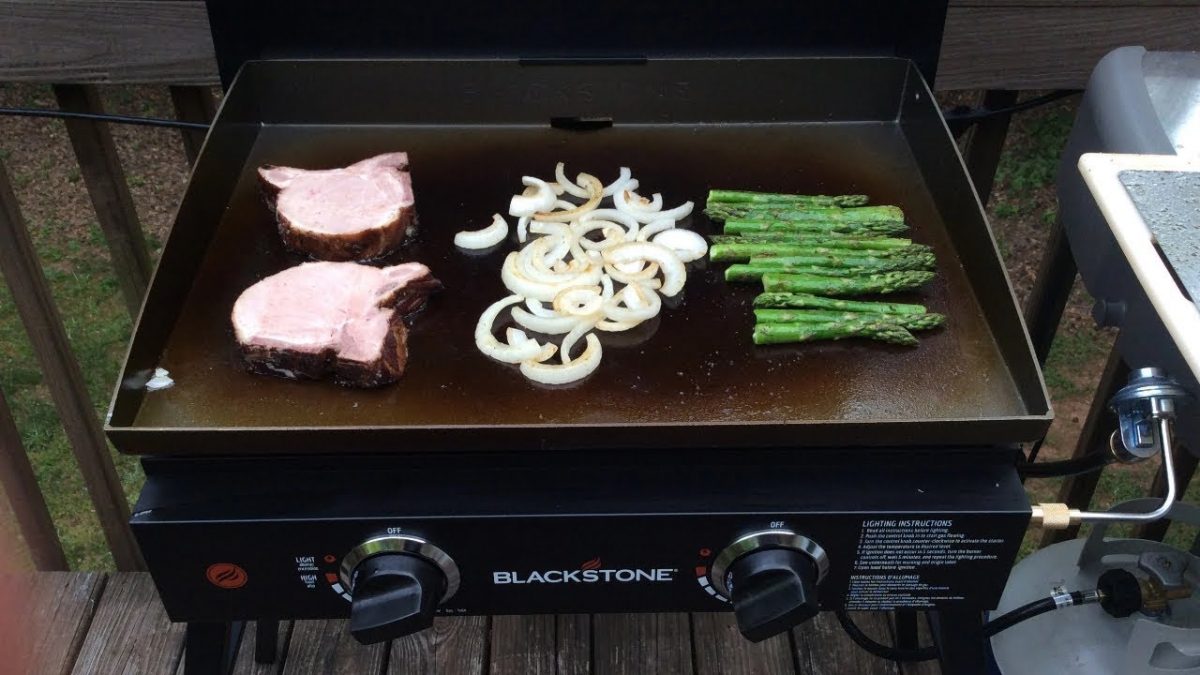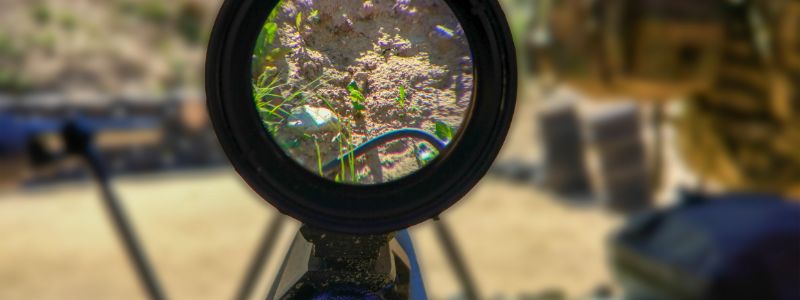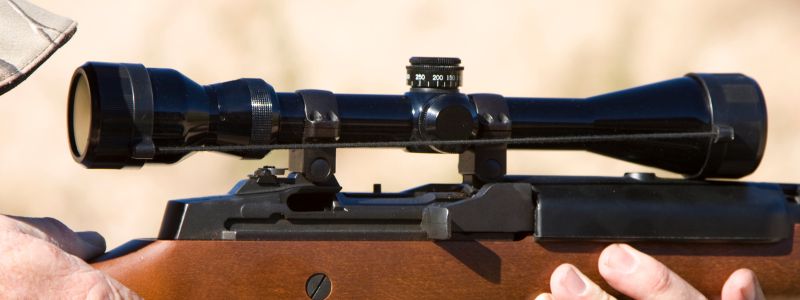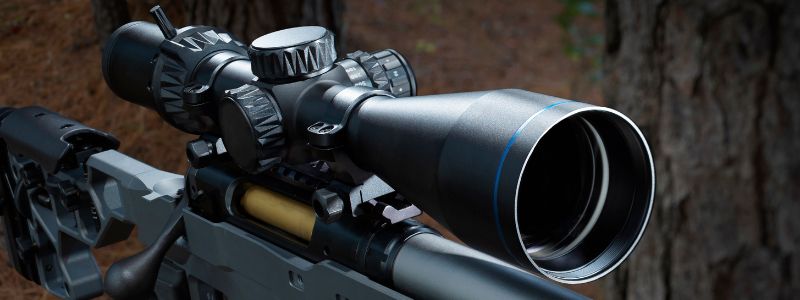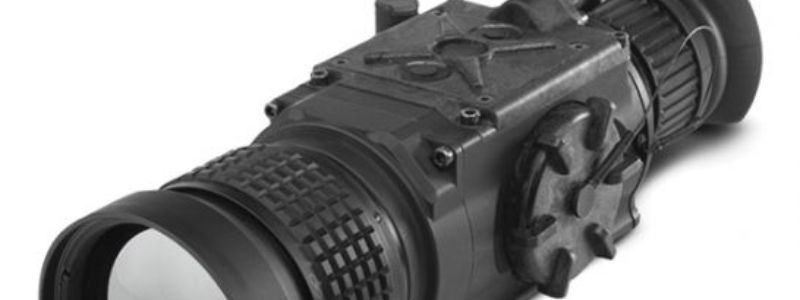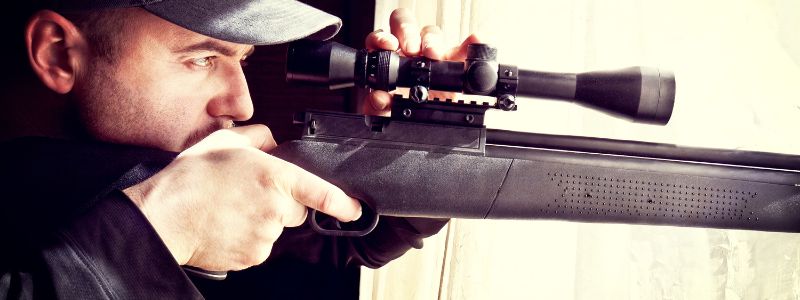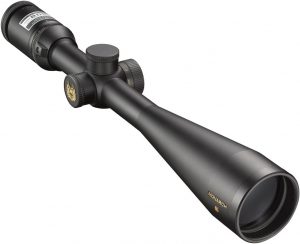Rifle Scope Comparison
If you’ve just bought an AR15 rifle, or are upgrading one you already have, you’ve probably wondered what are the best rifle scopes, and what contributes to deciding what makes one scope better than another. Well, the answer is rather complex and depends on a number of factors, including the type of gun you are shooting, your budget, the primary use you have for the scope, under what conditions you are using it for, and really just what feels best to you. The need of somebody who only shoots at tin cans in nice weather with a handgun will be radically different from that of a person hunting with a .308, in need of a powerful scope.
Best rifle scopes: our reviews
Yes, its a thing to be worried, how to find out the correct scope for a rifle that fits all of our needs within a budget.
In this review, our experts team pull out top ten most popular scopes from the current market that fits the budget and the requirements. Let’s read the explanation of the top picked scopes..
1. Vortex Razor HD GEN II Review – 4.5-27×56 FFP MOA
Perhaps one of the all time best rifle scopes made, the Vortex Razor HD is an extreme high end, long range tactical and hunting scope. We loved basically everything about it.
Auto Amazon Links: No products found. http_request_failed: A valid URL was not provided. URL: https://ws-na.amazon-adsystem.com/widgets/q?SearchIndex=All&multipageStart=0&multipageCount=20&Operation=GetResults&Keywords=B079STPWTX&InstanceId=0&TemplateId=MobileSearchResults&ServiceVersion=20070822&MarketPlace=US Cache: AAL_552898e29f27aec5c806fa06b7941f1b
The illuminated reticle, first focal plane design, high density optics, a glass etched reticle, high quality construction for use even with heavy recoiling cartridges, easy to use and understand controls, including illumination and side parallax controls, lockable target turrets, and so much more
Much like the Vortex Viper we looked at a moment ago, the Vortex Razor HD is built to last, and to stand up to regular, hard use.
One big drawback of this scope is the oversized 56mm objective lens. At this size, finding scope rings can be difficult, and your selection will be somewhat limited.
We also have to come to grips with the fact this is a scope that costs more than even a high end precision rifle. In other words, this isn’t an optic you buy just to go deer hunting with on nice fall days.
This is a professional grade scope for people who fling lead at very long distances into little tiny groups for a living, or who have mastered the art of long range precision shooting.
Or are working very hard to master that art. Suitable for long range tactical or sport shooting, and hunting in extreme conditions at great distances, the Vortex Razor HD is a fine scope- for those who can afford it and make use of its many advanced features.
2. Steiner T5XI Review – 3-15×50
Another scope billed as “tactical” the Steiner T5Xi is a high end rifle scope that is perhaps best suited for target shooting over anything else.
Featuring a proprietary “Special Competition Reticle” that allows for more accurate shots, the T5Xi also has an illuminated glass etched reticle, 3-15 power magnification, and is advertised as a high quality, medium range scope.
Auto Amazon Links: No products found. http_request_failed: A valid URL was not provided. URL: https://ws-na.amazon-adsystem.com/widgets/q?SearchIndex=All&multipageStart=0&multipageCount=20&Operation=GetResults&Keywords=B00LAF3QBE&InstanceId=0&TemplateId=MobileSearchResults&ServiceVersion=20070822&MarketPlace=US Cache: AAL_34c8810191608b5ca651cc2f8b16fde9
One thing that stands out as problematic is the 34mm tube body. This off standard tube size will be difficult to source rings for, although they certain can be had.
The oversized tube will improve light transmission, and make for a clearer, crisper image, which is made even better with the large 50mm objective lens.
Steiner has built a scope that really is a good all around rifle scope. Suitable for benchrest shooting, hunting or even the much advertised “tactical” uses, you’d be hard pressed to find a better scope in this price and feature range.
We really like the compact nature of this scope. Often target scopes are long and ungainly, but Steiner managed to make a nice, more compact match target rifle scope by going with the large 34mm tube.
This probably is enough to justify the “tactical” moniker, and it certainly would be an excellent choice on a precision tactical rifle.
3. Vortex Viper PST GEN II – 5-25×50 FFP
The Vortex Viper PST Gen II is a very impressive scope. While the price tag might be offputting for some, we think the Vortex Viper justifies it with the many features.
While no scope is perfect, we find that the basic second focal plane construction allows for a higher grade scope at a lower price compared to other competitors.
Auto Amazon Links: No products found. http_request_failed: A valid URL was not provided. URL: https://ws-na.amazon-adsystem.com/widgets/q?SearchIndex=All&multipageStart=0&multipageCount=20&Operation=GetResults&Keywords=B01MZ871IV&InstanceId=0&TemplateId=MobileSearchResults&ServiceVersion=20070822&MarketPlace=US Cache: AAL_53fa4196e0505a3edab46397f304eec9
Getting a first focal plane scope for this price is already a pretty good deal, and when you add in the advanced target turrets, side parallax adjustment, and other high end features, the Viper looks pretty darn good.
We really liked the attention to manufacturing detail with things like O-ring sealed and nitrogen purged construction, along with superior quality multi coated optics, and the incredible long range potential that comes from a 5-25×50 scope.
There are of course some downsides. Big scopes are not always best for all situations. This isn’t something you’d want to stick on your M4 style AR-15 for instance, and it’s a bit overkill for common hunting tasks.
It certainly excels as a long range target scope, but that also makes it a superior choice for a long range hunter, especially where distance shots are the rule, rather than the exception.
The Vortex Viper may also be at home on certain kinds of tactical or precision rifles.
Law enforcement agencies would be well advised to consider it as a scope on a sniper rifle, while private citizens who live in rural areas will appreciate the wide field of view and long range abilities when dealing with predatory animals or violent criminals.
All in all, despite a price tag around that of a halfway decent target or hunting rifle, there is an awful lot to love about this scope, and very little to dislike.
4. Leupold VXR 4-12x50mm Review
Leupold has been building fine rifle scopes for generations, and the VXR line of optics, represents some of the best rifle scope for the money that you can get anywhere.
These American made scopes are built to serve the needs of discerning hunters and target shooters.
Auto Amazon Links: No products found. http_request_failed: A valid URL was not provided. URL: https://ws-na.amazon-adsystem.com/widgets/q?SearchIndex=All&multipageStart=0&multipageCount=20&Operation=GetResults&Keywords=B07P8B2HM6&InstanceId=0&TemplateId=MobileSearchResults&ServiceVersion=20070822&MarketPlace=US Cache: AAL_3202b5719fdd551a8ea1a80a5029a9df
Featuring an illuminated reticle, a modest 4-14 magnification with a 50mm objective lens, “one turn” fast focus, special nitrogen/argon gas filled tube, and much more.
What we liked was the overall simple design, which made this generalist scope suitable for people who do more than just one task with their gun.
The VXR really is capable of serving as a target scope, hunting scope, or a high powered tactical scope where such application is called for. Of course, as with any generalist design, it may be good at a great many things, but does not master any one of them.
This is ok though, as few shooters are so specialized as to require a one trick pony optic. In reality, Leupold built this to be an outstanding hunting scope, and an excellent all purpose scope. While the price is a bit high, you get what you pay for.
A Leupold scope is a lifetime investment that you can pass on to your children or grandchildren. The 4-14 magnification won’t give you serious reach out and touch something, but for the ranges most people shoot most guns at, it is all the scope you’ll ever need in this lifetime.
5. Nikon Monarch 3 Review: 6-24×50 BDC Scope
The Nikon Monarch offers a lot of the performance of a dedicated bench rest scope, like 6-24 magnification, and a generous 50mm objective lens.
However, it lacks some of the hyper precise external controls that typify the dedicated match target scope.

This is a good thing in this case, because what we are looking at here is really one of the best scopes for hunting. Fine adjustable target turrets and side parallax adjustment are great things when you are trying to make one hole groups.
However, it is a fact of life that a hunter or even a sniper really isn’t concerned with that extreme level of precision.
Of course these extreme specialization comes at a cost. What is optimized for one thing may not work as well for another.
This is because there are multiple inches wide targets on an animal that will result in a quick death. There is simply no reason to care about extreme accuracy when your target is six inches wide.
We like the reasonable price for the high quality construction, but it is high enough to pause over.
Given the price point this optic sells at, your really have to be a dedicated, long range hunter and have a rifle to match. Otherwise, you are investing in more optic than you really need.
That said, hunters who are looking for the ultimate hunting rifle scope would do well to pay close attention to the Nikon Monarch.
It should also work nicely for tactical shooters who need a rugged, no nonsense scope with some real reach out and touch something ability.
6. Athlon Argos BTR 6-24×50 FFP
The Athlon Argos is among the best rifle scopes for a budget. Extremely affordable and loaded with high dollar features, we were pleased with the illuminated, glass etched reticle, fast focus knob, parallax adjustment, side focus and more.
Auto Amazon Links: No products found. http_request_failed: A valid URL was not provided. URL: https://ws-na.amazon-adsystem.com/widgets/q?SearchIndex=All&multipageStart=0&multipageCount=20&Operation=GetResults&Keywords=B082978NWJ&InstanceId=0&TemplateId=MobileSearchResults&ServiceVersion=20070822&MarketPlace=US Cache: AAL_0f1a77f7781dd871c26d40333a0f0773
The Argos is an example of how to build an affordable scope that is packed with advanced features normally found on scopes costing three times as much.
We can see a careful attention to detail in all aspects of this scope, and are convinced it is an equal to comparable “big name” scopes.
The question then is what can you do with the Argos? Its a pretty good all around scope, and a rare case of being very good at a lot of things.
As suitable for hunting as it is for long range target shooting or tactical work, the only real drawbacks shooters might find is the large 50mm objective lens can be a bit awkward in the woods, but that isn’t even really enough to notice.
We would favor this scope the most when engaged in precision shooting, as it is optimized for the kind of scope adjustments long range target shooters engage in, and with that in mind, we’d consider it as much at home on a police sniper rifle as on a match quality benchrest rifle.
Regardless of your final end use, you’d be hard pressed to find any real shortcomings with the Athlon Argos, and should be quite happy with it on any rifle you mount it.
7. Bushnell Elite Tactical Review – 6-24×50
We like the Bushnell elite for a number of reasons. Bushnell is one of the best rifle scope brands on the market today, and their quality and performance is readily apparent when examining the Bushnell Elite.
This particular model is billed as a tactical scope, although these days it’s pretty easy to slap that label on most any piece of gear.
Auto Amazon Links: No products found. http_request_failed: A valid URL was not provided. URL: https://ws-na.amazon-adsystem.com/widgets/q?SearchIndex=All&multipageStart=0&multipageCount=20&Operation=GetResults&Keywords=B071WGN2DJ&InstanceId=0&TemplateId=MobileSearchResults&ServiceVersion=20070822&MarketPlace=US Cache: AAL_d2ae9299fe02c7686f6a2b24245f714e
More like a 6-24×50 scope much like similar optics on the market with an illuminated reticle, the Bushnell Elite is about as tactical as it is target, or hunting. It certainly can serve any of those roles, and really any task you might have for it.
Taking the tactical moniker into consideration, we can see that the target turrets are more rugged in construction than scopes made for bench shooting.
This certainly is a positive, as it makes it unlikely to lose your zero when lugging your rifle through brush or over rough terrain.
This might make it tactical, but we think it makes it practical for any shooter who wants benchrest levels of adjustment on their scope, but actually takes their rifle out into the real world.
Somewhat modestly priced, this is one of the best all around rifle scopes we’ve seen, and there are certainly worse choices you can make.
There are better choices you can make too, but if you need a happy medium between entry level and high end, we think you’ll enjoy the Bushnell Elite for hunting, target shooting, or yes, even for tactical uses.
8. Burris Veracity Scope Review
The Burris Veracity competes with the Bushnell Elite in terms of price range, features and quality. In fact on the surface the two scopes are largely identical. However, there are a few differences that are noticeable in the Burris.
Auto Amazon Links: No products found. http_request_failed: A valid URL was not provided. URL: https://ws-na.amazon-adsystem.com/widgets/q?SearchIndex=All&multipageStart=0&multipageCount=20&Operation=GetResults&Keywords=B019KDSTB4&InstanceId=0&TemplateId=MobileSearchResults&ServiceVersion=20070822&MarketPlace=US Cache: AAL_6258caecf1c5fe001f7b34a7b117cdeb
Instead of 6-24 magnification, the Burris Veracity offers either a 5-20 or 5-25 power magnification with a 50mm objective lens. The differences are largely trivial, but there are some features that Burris offers that do allow it to stand out from the competition.
The tall target turrets and side parallax adjustment knob are ruggedized, making them suitable for non bench rest shooting, and the scope ships with a nice sunshade.
Some think the optical coating and overall construction are a bit higher quality than similar scopes, which certainly matters when shooting under demanding conditions.
We couldn’t find much wrong with this scope, or much to get excited over. It is another scope with decent magnification, and built to combine the best features of target and hunting scopes.
Unfortunately, the market is full of similar scopes at similar prices, and the best we can say about this sort of scope is that it clearly works very well for there to be so many nearly identical competing products.
If you are loyal to the Burris brand, or just happen to like it looks, or feels, then this is going to be the best rifle scope for you. Either way, it is worth taking a close look at, even if you move on to other scopes.
9. Nightforce SHV 5-20×56 Review
This delightful, and high grade scope is probably the best rifle scope for the money, as long as you don’t mind dropping the bucks to get a premium grade scope.
NightForce is known for making high end optics that are designed for use in low light conditions and well, at night.
Auto Amazon Links: No products found. http_request_failed: A valid URL was not provided. URL: https://ws-na.amazon-adsystem.com/widgets/q?SearchIndex=All&multipageStart=0&multipageCount=20&Operation=GetResults&Keywords=B076X5DLQR&InstanceId=0&TemplateId=MobileSearchResults&ServiceVersion=20070822&MarketPlace=US Cache: AAL_329f20ee0f629b3ac16bf875837d52b5
Originally designed to serve the needs of hunters who hunt at night, NightForce has evolved into a brand that serves the needs of tactical, sport, hunting and target shooters, all with the same no compromise scopes.
We really liked the 5-20 magnification which serves well for any purpose other than the most extreme long range shooting.
The zero resettable target turrets are to be expected on a scope of this quality, and this non illuminated reticle model is intended for daytime shooters, which is something of a change of pace from NightForce’s usual products.
We noticed the 56mm objective lens will require buying larger than normal scope rings which could be a problem on some guns, but it really isn’t an insurmountable obstacle. This scope will be perfect for hunting, target shooting, or long range tactical rifles.
You might not want to take it through really heavy brush in case the exposed target turrets get knocked out of zero, but this scope is really at home at the range above all else.
Reasonably priced for how feature rich it is, the NightForce SHV will provide years of good service for most any shooting task you might have in mind.
10. Swarovski Z8i Review – 2.3-18×56
One of the highest end rifle scopes sold today, the Swarvoski Z8i represents the pinnacle of rifle scope optics and manufacturing.
Certainly one of the best scopes ever made, the Z8i has an enormous 56mm objective lens, illuminated reticle and amazingly crystal clear optics.
Auto Amazon Links: No products found. http_request_failed: A valid URL was not provided. URL: https://ws-na.amazon-adsystem.com/widgets/q?SearchIndex=All&multipageStart=0&multipageCount=20&Operation=GetResults&Keywords=B01I25YM12&InstanceId=0&TemplateId=MobileSearchResults&ServiceVersion=20070822&MarketPlace=US Cache: AAL_30a8dcf0630ee3b2581f67039d16e1ae
While you might think this is a pointless feature, remember, hunting accidents do happen, and wouldn’t it be nice if your scope kept working after falling into a river or stream, and not just your rifle?
2.3-18 power magnification ensures sufficient magnification at most hunting and target distances for precise, accurate shooting.
Ruggedly built, and featuring a fast focus knob, this luxury grade rifle scope is without a peer on the market.
Which is also the main problem with it. Just what do you do with a scope that costs as much as a used car?
While it is true this is an amazingly high end optic, there are other scopes that can do exactly what it does and at a more approachable price point.
Instead, the Z8i is an optic that is both a luxury good and an extreme hunting rifle scope. Because you can get a target turret add on, the Z8i is also a great benchrest scope for those who demand the absolute best of their scopes.
The 56mm objective lens is going to be a bit hard to find a variety of rings for, but there are plenty of good ones on the market.
If you are building a high end custom fitted benchrest or hunting rifle, this is the scope for you. It certain could work for tactical use too, but there are better and cheaper scopes out there. Really, the Z8i is a lifestyle choice as much as it is a rifle scope.
Rifle Scope Buying Guide
Understanding Eye Relief
To put it simply, the eye relief of a rifle scope is the maximum distance you can place your eye from the rear lens and still acquire a complete, full sight picture. Move it further back than that, and the picture grows smaller and distorted.
Eye relief is important, because it dictates where on your rifle you mount your scope. Too far forward, or too far back and you can’t get a comfortable hold on the rifle while looking through the scope. This degrades accuracy and makes shooting more difficult. And imagine fighting with eye relief on a thermal scope. Crazy!
To get the most out of your scope, first determine where you place your cheek when you shoulder your rifle. Then check the eye relief of your scope, and install it so that it is compatible with how you hold your rifle.
Of course some fine tuning may be needed, but that is to be expected. You’ll find that you can quickly shoulder your rifle, and get a quick, natural and easy sight picture each time.
Objective Lens and Main Tube Selection
We will start with the main tube. There are two diameter measurements for it – 30mm or 34mm diameter. The larger the tube, the higher the range of adjustment. If you are a long distance target shooter, the Steiner T5XI has the 34mm tube that you need.
On the other hand, you have to handle the weight that comes with such tubes and the rings used in mounting them are also costlier. That is the reason why most people prefer 30mm tubes.
A scope is meant for outside world use which implies that it needs appropriate protection measures. Consider waterproof options and argon or nitrogen purging to prevent internal fogging.
When considering the objective lens, it is the number on the right of the magnification specification. Anything between 40-50mm is enough to gather the light needed for your shooting expedition.
Larger objective lenses are much better at light-gathering especially in low light conditions,but you also need to know how to mount them higher and deal with the weight too. To attain better accuracy, consider an objective that is not too large.
Coatings
Coatings help in bettering the light transmission. That is why multiple coated lenses are expected to perform better than those with a single coating.
The market, however, is manipulated to contain multiple coated optics that still under perform so, it is advisable to check out on the brand you pick. In general, these are the coating variations you accepted in the rifle scope niche:
- Single coated: Coating on at least one side of the lens
- Multicoated: More layers on one or both surfaces of the lens
- Fully coated: One layer of coating on the outer surfaces
- Fully multicoated: Multiple layers on surfaces in contact with outside air
Reticles Explained
These are the small tiny lines, dots or hashmarks that aid you in aiming at the target. Some of us will call them crosshairs.
They are different depending on the scope you select,and companies have customized them to have a unique one that identifies by their brand. Here, we are going to explain what some of the things mentioned in the reviews about the reticle.
Wire Reticles vs. Glass Etched Reticles
The creation of crosshairs came a long way from using human hair to using actual wires. Wires are strong and durable,and they can offer different thickness dimensions depending on the cut.
The use of platinum and tungsten is common,but they are vulnerable to damage since they support themselves. Issues such as pressure on the lenses, and dropping can distort them and wires, in general, are limited to how you can flatten and bend them.
They still serve as the best on-target guides,but the etched glass reticles came in to rectify some of the drawbacks.
High-end scopes such as Athlon Argon and Vortex Razor contain the etched glass specification. While there might be different methods to make such a reticle, most brands utilize the laser method – laser cutting into the glass.
While such reticles are found in expensive rifle scopes, some people disagree on whether they are safer to use than the wire reticles. Glass etching makes the reticles seem feeble, and some users can’t trust the glass to guide your target truly.
To counter the criticism, they are made durable by having thin layers of glass on surfaces of the etched glass for extra protection.
Due to using a laser engraved glass, the resultant scopes become costlier than those with wire reticles.
First Focal Plane and Second Focal Plane
You have already come across these terms in the course of reading the reviews. When we say that a Vortex Razor is a first focal plane rifle scope, for example, it means the focal plane or the view gets smaller or larger as you decrease or increase the magnification.
Therefore, the reticle zeroing and ranging will be consistent with the set magnification level. First focal plane reticles are suitable for estimating the range and evaluating the hold-over in long range shooting.
The only flaw with the firsts is that the reticle tends to grow as you increase the magnification. At times, it’s not possible to take a clear shot if you are targeting from long distances. That is why they are meant for bigger targets. An elk hunting scope, for instance, can apply the first focal plane principle.
Second focal plane reticles are conventional, and you find them in cheaper riflescope models. Here, the focal plane is the same size regardless of the magnification. That means the reticle will remain the same size it was when sighting.
If you zero the rifle at 3x magnification, at 100 yards, as an example, the reticle will retain the same magnification for accuracy. Using such a reticle to shoot at longer distances can be a challenge.
On the other hand, a varmint hunting scope can make use of such since the reticle remains thin while over the target. You’ll, therefore, be able to shoot smaller targets.
FAQs
THE NUMBERS ON SCOPE: WHAT DOES IT MEAN?
You see it all the time; 3-9×40, or some other combination of numbers used when describing a scope. What those numbers refer to is the magnification range of the scope, and the size of the objective, or forward facing lens.
Using that common 3-9×40 scope configuration, we can break it down and see what is going on. The 3 refers to magnifying an object three times larger than it appears without magnification.
This is the lowest setting on the scope. You will always see an object magnified at least 3x with this optic.
9 refers to the maximum magnification, which means the scope will show an object up to 9 times larger than an magnified image of your target.
It also means that your scope is adjustable to any magnification between 3x and 9x. Sometimes magnification is referred to as “power”, and people will speak of a “3 to 9 power scope”.
The objective lens size is important to note, because it tells us how big of a sight picture we get, and how clear it will be.
The larger the lens, the bigger the sight picture, and the more light that can be transmitted through it, which improves optical clarity. So as you can see, these numbers are very simple to understand once you break them down the first time.
HOW TO CHOOSE A RIFLE SCOPE?
After seeing the reviews above, some terms may not yet be clear, and that may confuse some of us who need a proper scope for different reasons. We need to know what factors to consider when picking a deer hunting scope or an instrument that will aid in target shooting over long distances.
WHY DO YOU SHOOT USING A RIFLE SCOPE?
You may use your weapon to hit targets, self-defense or as a hunting companion. Consider how far away your shooting position isand how clear you need to see your target. In the defending case, a rifle scope will suit you if you have a big land.
Otherwise, it will always get in your way. For target shooting, a scope that aims at 100 yards target will be less useful when you need to shoot longer distances.
If you are hunting, think about the environment. Somebody hunting in the forested areas will need a scope that zooms at least 10x due to the thickness of trees and bush cover. If you are in a park, you may need something that views further.
WHAT MAGNIFICATION DO I NEED?
While choosing the best riflescope needs to be able to handle recoil, you also need to consider the magnification for different shooting situations. Here are our recommendations:
Shooting Long Range : Whether you want to take prey down in the distance or want to snipe out to 1000-yards, there is a scope available for you. As necessary, as caliber is, you need an optic to get you out to those long distances. We advise you look at scopes with a 4-16X, 5-20X, 5.5-22X, or 6-24X range.
Shooting Medium Range: For the all-around hunter who wants to put food on the table to shoot a deer out to 300-yards mounting a 3-9X40 is an excellent choice. You will be able to kill a coyote at 70-yards to a whitetail standing at 130-yards.
Shooting at Close Range: Now if you are not into long range hunting and need something for the close range, we recommend you look at the 2-7X, 1-4X, and fixed 3X riflescopes. You will get a larger field of view that is just as important. However, if you do plan to do Varmint hunting, we recommend you look at the 1-4X or fixed 3X magnification instead.
Conclusion
There are a great many rifle scopes on the market, and we looked at some of the all time top rifle scopes available to the consumer at any price. These are suitable for budget consumers, as well as for shooters who have no worry about budget. We looked at some of the best target scopes, and some of the best premium tactical scopes for serious shooters. Each scope was selected for proven quality, manufacturer reputation, and real world uses. All that is left is for you to decide which one is best for you!
